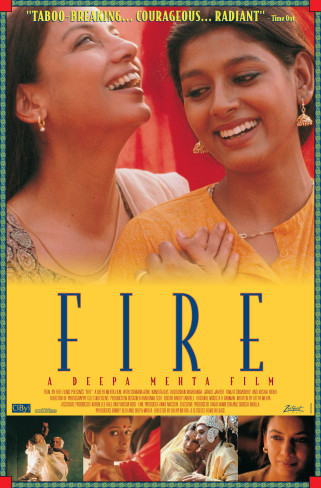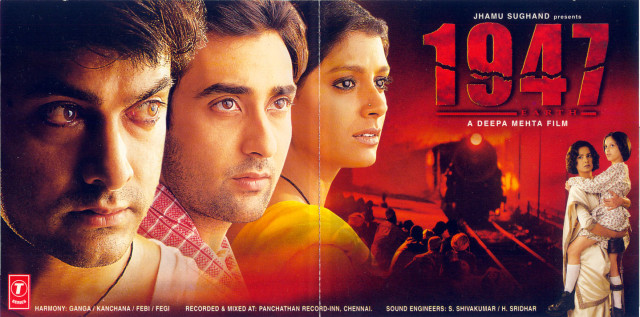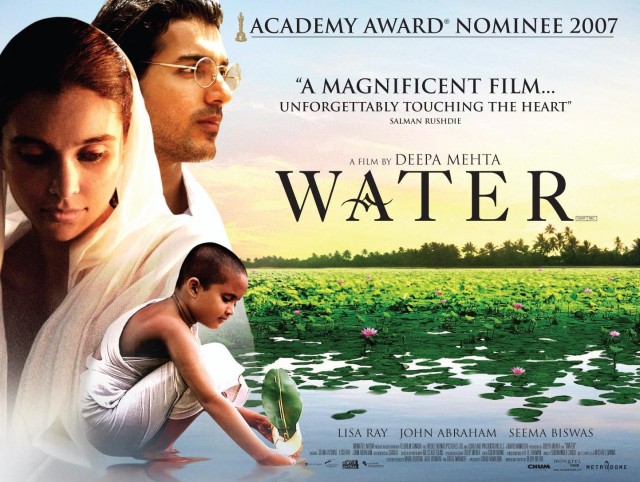“Cinema is a matter of what’s in the frame and what’s out”
-Martin Scorsese (founder, World Cinema Foundation)
For many years, Parallel Cinema has played an immense role in showcasing the true picture of our society. In a country where the Masala Films and fake reality shows flourish, these films are the ones that open the eyes of the audiences, showing them the actual reality. These films though, often fail to succeed at the Box office, but always win a special place in the hearts of their audiences. These are often banned in the countries of their subject matter, but win many awards and accolades in the various international film festivals. These films have always strived to free the minds of their audiences from the bondage of ignorance.
Also, there has always been a shortage of directors (at least in India) who were willing to risk their success and direct such films. But one such director who has gone against all odds but finally succeeded is Deepa Mehta. A graduate from Miranda House of the Delhi University, Deepa Mehta left India when she was 21 to learn film making in Canada. Though she left India a long time ago, her works reflected her concern about the social stigma in which India dwells. Three of her critically acclaimed films are based on elements; each element opening the doors to a whole new perspective. These films proved to be revolutionary in every way and forced their viewers to question the righteousness of the society in which they lived.
1. Fire:

The first installment of the trilogy, Fire is a story of two women, Radha and Sita. Radha is the wife of a religious man, Ashok, who blindly follows the words of his Swamiji. Ashok has learnt that desires are the cause of all the sufferings and one should always try to suppress them. It is later revealed that Radha is unable to bear children. Sita is the newest member of the family, being the wife of Ashok’s recently wed brother, Jatin. They live in a joint family, with their paralyzed mother and a servant in a crowded middle class locality of Old Delhi. Sita later comes to know about Jatin’s Chinese girlfriend but continues to remain quite. She also learns about Radha’s condition and her unfruitful marriage. Both the women are unhappy in their marriages and hence form a mystical relationship which words cannot describe.
The film portrays the hypocrisy of the Indian middle class society, where on one hand, the mother watches Ramayana upstairs, while on the other hand, her son, Jatin, sells illegal porn CDs downstairs. Where, on one hand, one brother preaches Swamiji, abandoning the wishes of his wife, on the other hand, the other pleasures being in an extra-marital relationship, ditching his newly wed wife.
The film raised issues such as homosexuality and feminism in the traditional backward thought of the Indian patriarchal society. This film was quite a shock to the Indian audiences and was widely opposed by various political parties and religious groups. But this film went on to receive the honor of the best film in many women international film festivals around the globe.
The film teaches us that sometimes one must learn to see some things (through the protagonist’s mind’s eye) without looking. We can all see such things once we remove the veil of insensitivity from our eyes. Radha also finally sees the ocean in the end, for which she longed since her childhood, through her mind, blowing off the fire (fear) of the society.
2. 1947: Earth:

Based on the novel, Cracking India by Bapsi Sidhwa, Earth depicts the plight of people during the time of India’s independence and partition in 1947. The film is from the point of view of a young Parsi girl, Lenny. Lenny is from a rich family, who hopes to remain neutral on the rising tensions between Hindus, Muslims and Sikhs. Shanta is a beautiful Hindu woman and Lenny’s ayah. Both Dil Navaz, the ice-candy wala and Hassan, the masseur are Muslims and in love with Shanta. All of them are in a unified group of people from various religions, most of whom are servants in Lenny’s house. But what happens when the ties of friendship are broken by war is brilliantly described in this film. This film is considered to be one of the best stories of deceit and betrayal. What does it feel to be rejected; both by your love and by your country are superbly shown in this film and that too, from the point of view of a little girl in Lahore.
This film was India’s official entry to 72nd Academy Awards for the Best Foreign Film category and the winner of The Best Film in the Asian Film Festival. This film is considered to be one of the best films showcasing truthfully, the lives of the people during the biggest migration of population, in the human history.
3. Water:

Set in 1938, this film is about the fate of women in rural India. In the times when child marriage was a common practice, these women are often widowed in their younger ages and sent to Ashram to expiate their bad karma. Chuyia, a seven year old widow is sent to such an ashram in Varanasi.She thinks that she is just a guest and soon her mother would take her away from there, though that never happens. There she meets fourteen other widows, of different ages and mindsets. She meets Kalyani, a beautiful young woman who is excluded from the other widows because of her circumstances (she is a prostitute, the sole breadwinner at the ashram) and becomes her friend. Shakuntala is also a widow at the ashram but is a very opinionated woman. She can read and takes classes with a guruji to learn the Holy Scriptures at the Ghats of the river Ganga. She learns about the formulation of The Indian Remarriage Act by her Guruji, though unknowingly.
Narayan is a young upper class man who follows Gandhism and falls in love with Kalyani. Kalyani, initially reluctant, also falls for him and together they decide to leave everything behind. But the old customs and traditions become a barrier to their love and Kalyani is forced to sacrifice everything. Shakuntala strives to give Chuyia a better life and to do it; she is willing to take a huge decision. The lives of all the widows are beautifully intertwined in this masterpiece, where all the widows signify every aspect of the backwardness of the society, which they were to survive.
The third and last in the elements trilogy, this film was the most successful one amongst the three. This film won enormous awards and is considered to be one of the most successful Hindi Films. The film asked the basic questions as to whether we should blindly follow the words of our ancient Vedas and Upanishads, according to which a widow were to always be chastised and be made felt guilty of their husbands’ death each and every second they live on this earth.
Deepa Mehta herself admits that all these films were very difficult to be made, as all these films were highly controversial and faced oppositions from various political parties and religious groups. Water, for example had to be shot in Sri Lanka and that too under the name, River Moon, due to widespread demonstrations against the film in India.
I would recommend all of you to watch these pieces of art which were opposed by some and awarded by the others, at least once if you want to get an insight into the true picture of the world. These films have opened my eyes and helped me to break away from the ignorance and insensitivity which is so prevalent in the society where we live in. These have totally changed my perspective about Life and I hope they change yours too.
By- Utkarsh Panwar

































